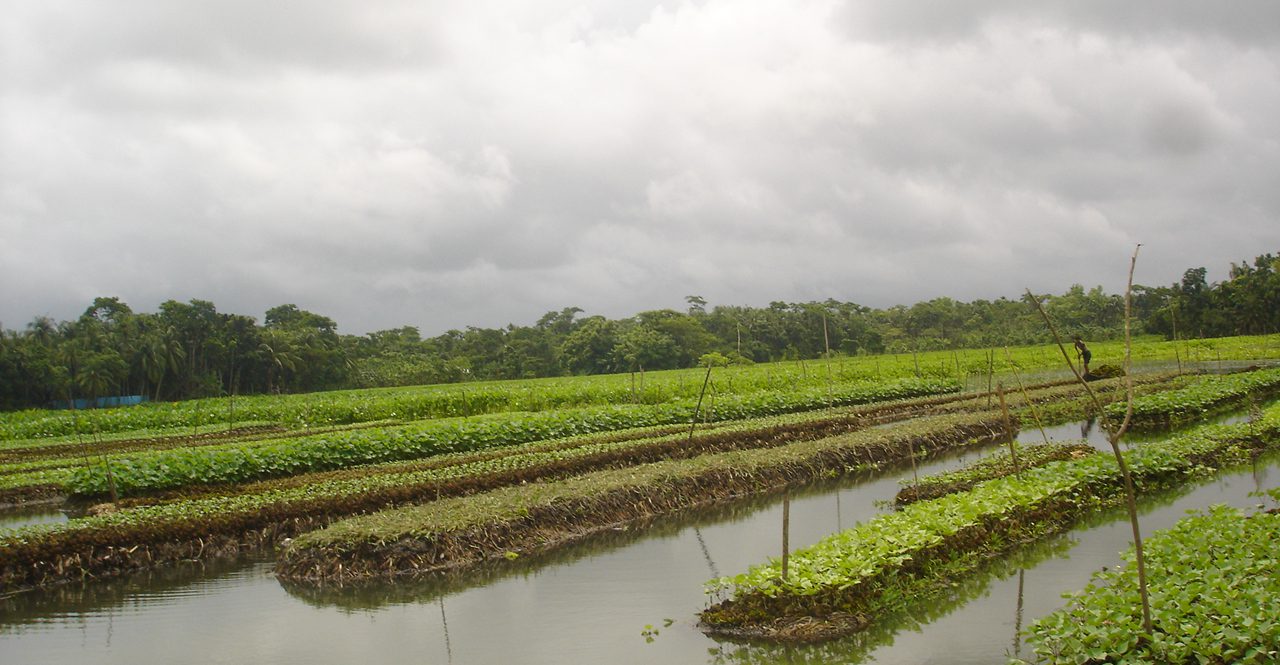
Author: T. Selje and B. Heinz
What is community-based adaptation to climate change?
Common top-down adaptation approaches have several shortcomings that have been shown to result often in weak and limited adaptation outcomes, accompanied by significant socio-economic or environmental deficiencies (1, 2) and have met resistance by the local communities (3). Community-based adaptation to climate change (CBA) addresses this by taking up adaptation a priori as a social process. Following this approach, each project begins with an assessment of the needs and vulnerabilities of the affected community – not only in relation to the geographical climate impacts but also to the socio-political context (4–6). By building on local knowledge and capacities, participatory and inclusive co-creation and an inter- and transdisciplinary appeal, CBA has the potential to be a more socially just, resource efficient and effective long-term approach to context sensitive climate change adaptation (1, 2, 4).
Why are we at Hudara committed to this?
Already now, 3.6 billion people are affected by the impacts of climate change (7), 1.2 billion people are expected to be displaced by 2050 (8) and 2 billion by 2100 (9). We at Hudara are dedicated to support and foster collaboration with the most marginalized and vulnerable communities which contribute the least to the impacts of climate change but are the most affected by it and are barely reached by adaptation efforts. This is a social justice issue (1) and therefore requires the inclusion and integration of the people affected themselves. We at Hudara therefore work with a rights based approach.
What does this all mean for us?
For our actions to be participatory and inclusive it is essential to involve the affected communities into every project step – from designing to implementation and to evaluation (4, 10). Trans- and interdisciplinarity encompasses not only the fusion of natural and social science but also of art, care, and technology (11). It also recognizes the existence of and work with feminist (12) and indigenous ways of living and systems of knowledge (re)production (13). Further, since adaptation is a social process for us, it inevitably means to take power relations and critical aspects into account (14). This ranges from the intersecting oppression based on social identities (like gender, age, or class) (15) to the (neo-)colonial legacies (16) which erect severe obstacles to overcome. All in all, a community-based approach to adaptation is therefore not only about supporting people to get involved into adaptation actions in their daily lives themselves but also to disenfranchise structures that hinder more intrinsic, inclusive and long-term adaptation from the ground up (17).
- Kirkby, P., Williams, C. & Huq, S. Community-based adaptation (CBA): adding conceptual clarity to the approach, and establishing its principles and challenges. Climate and Development 10, 1–13 (2018).
- Ensor, J. et al. Can community-based adaptation increase resilience? Climate and Development 10, 134–151 (2018).
- Brink, E., Falla, A. M. V. & Boyd, E. Weapons of the vulnerable? A review of popular resistance to climate adaptation. Global Environmental Change 80, 102656 (2023).
- McNamara, K. E. et al. An assessment of community-based adaptation initiatives in the Pacific Islands. Nature Climate Change 10, 628–639 (2020).
- Reid, H. et al. Community-based adaptation to climate change: an overview. Participatory learning and action 60, 11–33 (2009).
- Huq, S. & Reid, H. Community-based adaptation: A vital approach to the threat climate change poses to the poor. (2007).
- WHO. Climate change – key facts. https://www.who.int/news-room/fact-sheets/detail/climate-change-and-health. (2023).
- European Parliamentary ResearchService. The concept of ‘climate refugee’ Towards a possible definition. https://www.europarl.europa.eu/RegData/etudes/BRIE/2021/698753/EPRS_BRI(2021)698753_EN.pdf (2023).
- Cornell University. Rising seas could result in 2 billion refugees by 2100. https://news.cornell.edu/stories/2017/06/rising-seas-could-result-2-billion-refugees-2100. (2017).
- Piggott-McKellar, A. E., McNamara, K. E., Nunn, P. D. & Watson, J. E. M. What are the barriers to successful community-based climate change adaptation? A review of grey literature. Local Environment 24, 374–390 (2019).
- Alvargonzález, D. Multidisciplinarity, interdisciplinarity, transdisciplinarity, and the sciences. International studies in the philosophy of science 25, 387–403 (2011).
- Patnaik, H. A. Gender and participation in community based adaptation: Evidence from the decentralized climate funds project in Senegal. World Development 142, 105448 (2021).
- Ford, J. D. et al. Preparing for the health impacts of climate change in Indigenous communities: The role of community-based adaptation. Global Environmental Change 49, 129–139 (2018).
- Galvin, M. Making Community-Based Adaptation a Reality: Different Conceptualisations, Different Politics: 12, 50–63 (2019).
- Yates, J. S. Power and politics in the governance of community-based adaptation. Community-based adaptation to climate change: Emerging lessons 15–34 (2014).
- Barnett, J. Global environmental change III: Political economies of adaptation to climate change. Progress in Human Geography 46, 1106–1116 (2022).
- Ensor, J. Emerging lessons for community-based adaptation. Community-Based Adaptation to Climate Change. Emerging Lessons. Practical Action Publishing, Rugby 183–197 (2014).












